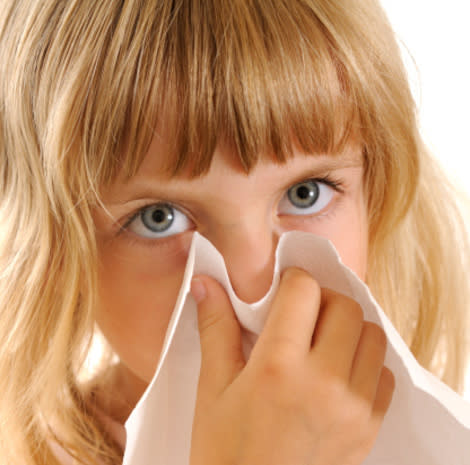The Most Germy Places in Schools

Kids catch anywhere from seven to 12 colds each year. Add in the other bugs sweeping the nation's school systems -- H1N1, norovirus, strep, e.Coli, MRSA, and run-of-the-mill influenza -- and kids age 5 to 17 end up missing school by the millions. The U.S. Centers for Disease Control and Prevention estimates that nearly 22 million school days are lost due to the common cold, and as many as 38 million schools days are missed thanks to the flu. And the place where most kids are picking up the germs is at school.
"Kids spend more time [at school] then they do at home," Peter Sheldon, vice president of the commercial cleaning company Coverall, tells Yahoo! Shine in an interview. "But while things like flu shots and other preventative care are important, schools are not playing enough attention to effective cleaning."
Eighty percent of common infections can be spread through the air, water, food, and via contact with contaminated surfaces, he points out. And the places where kids are most likely to pick up germs aren't as obvious as parents might think.
"The toilets are probably the cleanest areas in a school, believe it or not," he says, "because they are actually getting cleaned on a daily basis."
The places that should be cleaned often, but aren't, include:
Water fountains (they can harbor as many as 2.7 million bacteria per square inch on the spigot --
and, apparently, the water in them isn't always clean either)Manual pencil sharpeners (most classrooms still have them -- and most kids don't wash their hands before or after using them)
Computer keyboards and mice (these frequently used tools can have 200 times as much bacteria on them as a toilet seat)
Sink faucet handles (the thing that most people touch right before they wash their hands)
Tabletops, like classroom desks and the tables in school cafeterias (According to Dr. Charles Gerba, a University of Arizona microbiologist whose work has earned him the nickname "Dr. Germ," the average desk harbors 400 times more bacteria than the average toilet seat)
Because of budget cuts across the country, school custodians are sweeping and vacuuming and taking out the trash but rarely have the time or the tools to clean these "high contact points" properly. And there's no way for kids or teachers to tell at a glance whether these spots are as clean as they should be.
"That's the thing," Sheldon says. "You can clean something and it may look clean, but you can have thousands of bacteria and viruses on the surface."
High schools are worse than elementary schools, thanks to the abundance of athletic equipment and facilities, and outbreaks of antibiotic-resistant staph (MRSA) are becoming more frequent.
"By far, the dirtiest place in an entire high school is the wrestling mats," Sheldon says. "Kids every year are getting staph infections, ring worms, and more from them." The mats may get the occasional swipe with a dirty mop -- "Maybe they have a disinfectant, maybe they don't," he adds -- but for the most part, most schools don't do much to clean their equipment.
Parents can help their kids stay healthy by teaching them good hygiene habits. "Germs are transmitted from hand to face," Sheldon points out. Young kids can be taught to cover cover their mouths with their arm instead of their hands when they cough and sneeze; older kids should be reminded to throw used tissues in the trash instead of stuffing them into their desks, backpacks, or pockets. No kid should ever put his or her mouth directly on a water fountain; instead, they should bring their own water bottles with them if schools allow it. Swabbing down desktops with an antibacterial wipe each day can make help minimize their contact with germs, and a supply of mechanical pencils can help students avoid grimy pencil sharpeners.
Kids (and teachers) should try to stay home from school when they're sick, but some viruses can spread before symptoms start to show. The most-effective thing to do? Keep your hands clean. Gel and foam hand sanitizers are convenient, but if they don't contain at least 62 percent alcohol, then they won't be effective -- and while they do kill germs when used properly, they don't remove bacteria (or dirt, or grease) from one's hands. The CDC recommends frequent hand washing instead, and Sheldon agrees. "There's no substitute for soap and water."
Also on Shine:
What cold hands say about your health
Treat baby's cold without medicine
6 signs that your kid is too sick for school
